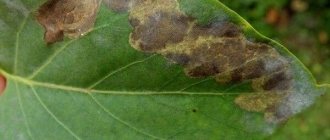Hungarian lilac description
The species Hungarian lilac (Syringa josikaea) is one of the most compact in the entire genus of lilac (Syringa). Even in a natural environment, the height of the Hungarian lilac does not exceed 3-4 meters. The crown's diameter is always narrower than its height, thanks to which the plant always looks elegant. Having reached its optimal size, the shrub stops growing, and it grows quite quickly - the annual growth is at least 25-30 cm per year.
This plant is distinguished by the stability of its crown, its neatness and natural roundness, which eliminates the need to constantly shape it.
The shoots of Hungarian lilac are beautiful and thick, erect, directed in height, which creates the effect of some openwork of the crown. The shrub itself does not lose its attractive and lush appearance even in the cold season.
Even old shoots do not differ in color from shoots of other types of lilac, and young branches of a violet-purple hue significantly enliven the green garden surroundings. Hungarian lilac does not produce root shoots, which must be taken into account when propagating it, but at the same time it is a promising natural decoration for any garden.
The leaves of the plant are in the shape of a wide ellipse, rich green in color, with a shine, reaching up to 12 cm in length, have delicate serrations along the edges, have a gray-green tint below and are slightly drooping along the middle vein.
The flowers are lilac in color, “on a stalk”, looking like an elongated tube, small, with a not too rich aroma. They are distinguished by a tiered “design”, collected in narrow inflorescences. Easily distinguishable from flowers of other species by the tiered arrangement of inflorescences. The diameter of one flower does not exceed 1 cm, but the entire flowering branch can reach 30-35 cm in diameter.
Hungarian lilac blooms 2-3 weeks later than other types of shrubs and lasts for 20-25 days. The longevity of shrub growth is up to 90 years or more. The Hungarian is undemanding not only to weather conditions, but also to soil conditions, but loves light combined with insignificant shadow.
It is recommended to plant lilacs as both single and group compositions of garden shrubs, as well as for the construction of hedges and landscaping, both private and urban and industrial areas.
Description: varieties and varieties
This representative of the Lilac genus differs from other species and varieties by its later flowering.
It is less common in cultivated form than the common lilac. Although they are almost the same in terms of care. Hungarian lilac has a dense ovoid crown, is practically not prone to chaotic growth and does not lose its bush shape. An adult plant reaches a height of 4 m. Characteristics of the crop:
- The leaves are elliptical, up to 12-13 cm long. The underside of the plate has a ciliated edge and slight hairiness. The color is rich green, turning yellow in the fall.
- Crown diameter - up to 4 m.
- Flowering occurs 1-2 weeks later than with common lilac and lasts about 3 weeks.
- The flowers are tubular, bright purple in color, up to 1 cm in diameter, united in pyramidal inflorescences up to 30 cm long. They are less dense and openwork, with a narrower shape and a clear division into tiers. This makes them especially decorative. The varieties differ in shades. There are these types:
- white-flowered;
- red-flowered;
- pinkish;
- pale (with a very light tone of lilac buds).
Attention! The lifespan of any shrub variety with proper care is up to 90 years.
Varieties and forms of Hungarian lilac
Most modern varieties are based on common lilac. Russian nurseries do not offer their varietal diversity in Hungarian. In horticultural culture, there is only a standard shrub and several of its forms.
Hungarian forms:
- pale (in Latin: Syringajosikaea f. pallida) has a pale lilac color with a faded shade;
- red-flowered form (Syringajosikaea f. rubra) – purple, with a reddish tint;
- white-flowered form (Syringajosikaea f. monstrosa) – white flowers;
- pink flower (Syringajosikaea f. rosea) – pastel pink flowers with a lilac tint.
Shrub propagation. Existing diseases and pests of lilac
Varieties of Hungarian lilac do not form shoots, so the plant is propagated using seeds and cuttings. The second method of reproduction is more productive and is used more often. For this purpose, at the beginning of summer, green cuttings with 2 or 3 nodes are cut. The leaves located below are completely removed, and the upper ones - half. The workpieces are planted into the cuttings at an acute angle. Water and ventilate regularly. After a season, the grown plants can be safely planted in the planned location in open ground and continue to be grown according to the general scheme. Seeds are sown for seedlings in early spring after long stratification (2-2.5 months).
Among the diseases, lilacs are most often attacked by powdery mildew and rust. Slugs, bugs, scale insects, and mice can spoil bushes. They should be dealt with using known methods.
The Hungarian variety of lilac can win the heart of any gardener. Slender bushes that require a minimum of care can easily become the main highlight of the entire site.
Landing rules
The rooting time of lilacs will vary depending on the variety, since the peculiarity of some crops is the need for planting in the spring, while other plants take root best after autumn planting in open ground. And also the choice of planting dates will concern reproduction options.
The best neighbors for a low-growing ornamental bush will be the following crops:
- viburnum;
- sakura;
- lilies;
- clematis.
The preferred type of propagation of dwarf lilacs is cuttings or layering. Varietal hybrids are best planted as seedlings or grafted. As a rule, rooting periods fall from August to September.
To take root in the garden, the owner of a young decorative lilac must prepare a hole whose dimensions will be 50x50x50 centimeters. Before planting, the pit should be treated with disinfecting compounds. For these purposes, you can use a solution of manganese or specialized store products.
And the root system of the crop is also treated; it should be watered with any growth stimulant a day before planting. Drainage and a layer of sand are placed at the bottom of the hole. It is best to use a specialized soil mixture with the obligatory presence of nitrogen as soil for planting dwarf lilacs for productive growth of roots and green mass.
The culture is placed in the center of the hole, the roots are leveled, and then sprinkled with a layer of soil. After planting, the plant should be watered with warm water, compacting the soil in the hole.
Lilac grafting
A popular method of reproduction, but quite complex. It is great for quickly propagating any plant variety.
- Ideally, the rootstock (a 2-3 year old seedling grown from seeds) and the scion (cutting or dormant bud (budding)) should be of the same variety.
But you can also graft cultivated varieties onto the rootstock of Hungarian lilac or privet. Grafted specimens must be transferred to their own root system as early as possible - reliably and quickly using layering.
When is the best time to vaccinate?
If you use an awakening bud as a scion, then in early spring (early March - early April), as soon as it swells, all methods are suitable. But due to the fact that the bud blooms quickly and it is difficult to catch the moment, lilac grafting is rarely done in the spring, and more often in the summer with a dormant bud.
- The best period for grafting with a dormant bud (budding): from July 10 to August 10 (Middle zone, Moscow region, Leningrad region). It is possible throughout the summer, since the main thing is good sap flow.
Preparation of the rootstock
It is best to graft onto a lilac seedling specially grown from seeds in a pot or greenhouse. In this case, you can use root shoots, but the percentage of successful grafting will be lower.
- In the middle - end of June, remove the shoots and trim the side shoots at a height of 10-14 cm so that the pruning area has time to heal by the right time. 5-6 days before grafting, water the lilac generously, then the bark will separate more easily. Root collar diameter: 0.7-1.4 cm.
Scion preparation
- 7-10 days before budding, cut off an annual shoot: thickness 3-4 mm, length 20-30 cm. It should be mature: brown bark, and if bent you will hear a faint cracking sound, large axillary buds.
- Remove the leaves, but leave the leaf petioles - 1-1.5 cm long for ease of grafting. Pack the cuttings in a bag with damp moss (sawdust), then put them in the refrigerator or basement for 7-10 days.
Preparation of scion (shield)
- Cut off large buds from the prepared cuttings. It is better to take from the middle part: the lower buds are weak, and the upper (flower) buds are unsuitable for use.
- Take the cutting so that your index finger supports it from below, and your thumb and middle finger are above the bud to be cut. Place the knife 0.7-1.1 cm above the cut bud at an acute angle and shallowly but quickly cut the shoot.
- Move the knife at the same depth, and slightly deeper under the kidney. The regular shield has a length of 15-25 mm, a bud in the center and a thin layer of wood. Then lift the wood from the edge with a knife and separate it from the bark with a clear movement. If the vascular bundle has been damaged, then the shield is not suitable for grafting.
Instructions for grafting (budding) lilacs
- Rake the soil away from the rootstock and wipe the grafting area with a damp, clean cloth. Use a sharp knife to make a T-shaped cut (length of the longitudinal part is 2-3 cm) on the stem 3-5 cm above the ground level. The cut must be made quickly, and where the cuts touch, lift the bark.
- Take the shield (only properly prepared!) by the petiole and insert it into the T-shaped cut on the rootstock so that it ideally ends up in the center of the cut and under the edge of the bark on the rootstock.
Dormant bud at the cut site - the lower part is inserted under the bark. - Press the bark of the rootstock to the scion and tie it on top with prepared tape made of medical elastic film for compresses (width 1-1.5 cm, length 25-35 cm) or electrical tape (sticky side out). They tie it from top to bottom, tightly and in a spiral, so that each new turn overlaps the previous one. The winding should be along the entire length of the longitudinal cut, the lower edge (fasten with a loop) is under the kidney, but the kidney itself remains open.
- Cover the rootstock with soil and water it after 5-7 days. Once another 15-20 days have passed, see if the vaccinations have taken root. On the established scute the bud will be shiny and fresh, and if you lightly press the petiole, it will fall off. If the scion does not take root, the bud will turn black and dry out, but the petiole will sit tightly.
- As soon as the first frosts pass in the fall, immediately mulch the “oculants” for the winter with an 8-12 cm layer of dry peat above the grafting site.
- 2nd year. After the snow melts and solar activity increases (mid-March - early April), rake off the mulch, remove the wrapping and cut the trunk 5-7 cm above the bud “to a thorn”. Treat the cut with garden varnish, brilliant green or oil paint on drying oil.
- Leave 2-3 upper buds on the “thorn” for sap flow and nutrients, and remove the rest. After the eye begins to grow, these buds will also need to be removed, and the new shoot will need to be tied to the “thorn”, otherwise it may break off.
- 3rd year. In spring (late March - mid-April), remove the “thorn” and plant it in a permanent place in the garden.
How to care for the graft (oculant)?
Care in spring and summer (2nd year) comes down to regular watering, loosening the soil and removing shoots. In April - May, feed the oculant with 20-30 grams of complex mineral fertilizer. By September, new shoots usually grow 40-80 cm in length.
Rules and tips
- The correct technique for harvesting scion and rootstock is of great importance.
- It is better to carry out budding at home, and if outside, then in the shade. Lilacs cannot be planted during rain. The best time for budding is from 5.00 to 9.00, and on a cloudy day it is possible from 16.00 to 20.00.
Attention
- For information about the advantages and disadvantages of grafted lilacs, see the article on planting and care in open ground at the bottom of the page.
- According to the famous breeder Theodor Havemeyer, summer budding of varietal lilacs onto privet from open ground is a bad propagation method. Since the bud is often grafted quite high, which eliminates the transfer of the scion to its own roots and after a few years only privet will remain. And for potted crops or plants that are intended for winter forcing, this is a good option.
Reproduction
How to propagate an already growing shrub? The Hungarian does not produce offspring, which makes its reproduction somewhat difficult. The main method is cuttings. Both green and woody branches are suitable for rooting. With proper care, new seedlings are obtained easily. Rooting of cuttings occurs in 90%.
Attention! Hungarian lilac is propagated by cuttings, which is why it has more stable characteristics than a grafted shrub. It has a strong root system
Self-rooted shrubs have the ability to recover faster after severe freezing, so they are excellent for the climate of central Russia.
Lilacs can be propagated from seeds. Stratification is carried out first - simulating the winter period. To do this, the seeds are kept at a temperature of 3-5 degrees for 2 months. Sowing begins in spring-autumn in prepared soil.
Tagged
| Life Form: | Bush |
| Dimensions (height), m: | Up to 5 |
| Crown diameter, m: | Up to 4 |
| Crown shape: | Wide. Bark brownish-gray, shoots green |
| Growth pattern: | Grows fast |
| Annual height gain: | 35 cm |
| Annual increase in width: | |
| Durability: | |
| Leaf Shape: | Widely elliptical, 6-12 cm long, ciliated at the edges |
| Summer coloring: | Dark green on the upper side, bluish-green below |
| Autumn color: | Yellow |
| Flowers (color): | Bright purple, fragrant, about 0.7 cm in diameter, collected in pyramidal apical inflorescences 10-15 (20) cm long |
| Beginning and end of flowering: | In May-June |
| Fruit: | Fruit capsules, 1-1.7 cm long |
| Decorative: | Very beautiful when in bloom |
| Application: | Single plantings, groups, edges, hedges |
| Relation to light: | Photophilous, but tolerates light shading |
| Relation to moisture: | Does not grow on wet soils |
| Relation to soil: | Prefers deep, well-drained loams with an admixture of lime, does not grow on heavy soils |
| Frost resistance: | Frost-resistant |
| Note: | Smoke and gas resistant |
Shrub or tree up to 4-5 m high with brownish or grayish-brown branches. Young shoots are brownish, reddish or reddish-brown, with scattered light lenticels, densely pubescent with short dark hairs. Older shoots are bare and ribbed.
Hungarian lilac differs from ordinary lilac in its leaf shape. The leaves are broadly elliptical, up to 6-12 cm long, dark green above, shiny, glabrous, gray-green below, sometimes pubescent along the midrib. The lilac fragrant flowers are collected in erect narrow inflorescences, tiered in the lower part.
It blooms 10-15 days later than other types of lilac.
The fruit is a cylindrical, bare, initially green and then reddish or brown capsule up to 1 cm long. The fruits sometimes stay on the bushes all winter.
Distributed in the Urals, in the southern and middle parts of Western Siberia, in Hungary and Yugoslavia.
It grows quickly, is undemanding to soil conditions, frost-resistant and gas-resistant. Propagated by seeds and cuttings. Decorates gardens, parks, squares and boulevards. Planted singly and in groups, it is used to create hedges, as it lends itself well to cutting and retains its given shape for a long time. Good for landscaping industrial areas.
You can buy seedlings in Krasnoyarsk from us!
It is not without reason that the Hungarian lilac has earned the title of national favorite. Explanations for this are its absolute aesthetics and versatility, ease of care and unpretentiousness, existence and survival in conditions of significant temperature changes. Blooming lilac is a symbol of the approaching warmth and summer; it is impossible to take your eyes off its flowers, and its aroma can be inhaled endlessly.
How does Hungarian lilac reproduce?
A distinctive feature of the Hungarian lilac is that it does not produce suckers. In this regard, some difficulties arise with the propagation of shrubs.
The main method is cuttings. Not only green twigs, but also lignified ones are suitable as propagation material. If you approach propagation responsibly, the seedlings will quickly take root.
Another method of propagation is by seed. A prerequisite is stratification. In its process, the winter period is simulated for 2 months, keeping the seed material in the refrigerator. Seed sowing is carried out in autumn or spring. With careful care, germination reaches 70%, which is slightly lower than when propagated by cuttings.
Chinese lilac
Chinese lilac ( Syringa
x
chinensis
) is a hybrid of common and Persian lilacs. Shrub up to 5-6 m high with thin hanging shoots. The leaves are oblong-ovate, from 3 to 10 cm long. The flowers are very fragrant, lilac-purple, in loose panicles, up to 17 cm long; bloom in May-June.
Decorative forms:
'Lilac' (lilac flowers);
Syringa meyeri
) is a compact shrub up to 1.5-1.8 m high. The leaves are broadly oval, tapering at the top, 2-4 cm long, dark green. The flowers are fragrant, light lilac-pink, in erect inflorescences 3-10 cm long; bloom in May-June. The advantage of this species is its early entry into the flowering season. Known only in culture, found in China. In central Russia, during severe winters it can be damaged by frost.
Lilac propagation by cuttings in spring
Lilacs are propagated by cuttings mainly for industrial purposes or by experienced gardeners who want to obtain a large number of young plants.
The method is labor-intensive and quite complex, requiring patience and skill. At the same time, many gardeners are improving their skills and trying to propagate lilacs using cuttings.
- And all because, according to famous lilac growers, green cuttings are the best way to propagate this plant (Emile Lemoine, Isabella Preston).
When is the best time to take cuttings?
It is better to propagate lilacs by cuttings in the spring during budding (before flowering begins). At the same time, there is a popular opinion that it is optimal at the beginning of flowering (early flowering varieties) or during mass flowering (late flowering varieties).
However, the main thing is that the shoot does not begin to become woody, otherwise it will not take root. Those. Only summer “green” cuttings can be rooted, and not winter “woody” cuttings. Usually this is May - June depending on the climate and species/variety.
How to properly prepare cuttings?
To prepare a cutting, it is better to take an overgrown shoot from the middle part of the crown of a young lilac (4-7 years old, cuttings from old bushes take root worse) of medium thickness, which extends from the vertical growth shoots at an angle. Thick branches or fatty shoots (spinning top) should not be taken.
Fat shoot of lilac
- It is better to carry out the preparation early in the morning. Cut the cuttings from the shoot so that the cut is immediately under the lower pair of leaves (0.5-0.7 cm) and at an acute angle. Each cutting should have 2-3 leaf nodes, approximately 10-14 cm long.
- Then cut off the bottom pair of leaves, and shorten all the upper leaf blades by 50%. Trim the tip of the shoot above the top pair of leaves (0.8-1.1 cm) at a right angle.
A good lilac shoot for cuttings
Important! Do not cut off more than 70-80% of the total annual shoots. It is not advisable to cut shoots from the same plant every year.
An example of a prepared lilac cutting
Next, we tell you in detail how to propagate lilacs by cuttings in the spring with photos and videos.
Lilac cuttings in spring: instructions
- Soak properly prepared cuttings for a day in a solution with the Epin Extra biostimulator - 1 ml per liter of water, for 10 cuttings working liquid - 200 ml. It is also possible for 15-18 hours in an aqueous solution with “Heteroauxin” (1 tablet (0.1 g) per liter of water), if there is no first stimulant. After soaking, do not pour out the solution with Epin Extra; it will still be useful for spraying the cuttings after planting.
- Prepare the landing site. It should be in partial shade, it can be a greenhouse, a greenhouse or a separate area of the garden, if you cover it with a plastic bottle (4-6 liters).
- Prepare the soil mixture. Ideally, the composition is: lowland peat, high-moor peat and coarse-grained perlite - 2:1:1, but you can use lowland peat, perlite - 2:1. Dig a “cutting” 35-40 cm deep: at the bottom of the hole there is 10-15 cm of drainage (crushed stone, expanded clay), then 15-20 cm of rotted manure or compost and 5-8 cm of soil mixture on top. Second option: 10-15 cm drainage, 10-15 cm soil mixture and 3-4 cm sand on top.
- Then water the soil mixture with a fungicide solution (Fitosporin, potassium permanganate or iodine) to prevent infection with fungal diseases. More details about the drugs in the article: “ HOW TO FIGHT POWDERY MILDW?” "
- Rinse the cutting with clean water and dip it in the Kornevin stimulator (powder). Make a small depression in the sand with your finger or a pencil and plant the cutting in it so that the lower node is completely immersed in it (1-1.5 cm), but does not touch the soil mixture. Compact the sand near the cuttings and spray them with water (it’s good to add a soaking solution with Epin Extra to the water). Planting distance: 10-12 cm between rows and 5-7 cm between cuttings, their leaves may slightly touch each other.
- Cover the greenhouse (30-40 cm high, the closer to the cutting, the better) with a layer of film, then a translucent cloth or thin white paper on top to shade the cuttings, and again a layer of film. Or place a mesh plastic box or several thick branches (spruce branches) on top of the film. Or in the shade of a large bush (jasmine, rhododendron).
- To root lilac cuttings, ventilate 2-3 times a day (3-4 minutes) and spray the cuttings. For better rooting, air humidity should be at least 90%, and the temperature should be 23-26°C. Once every 6-8 days, spray the cuttings with potassium permanganate (0.5 g per 2 liters of water - light pink color) to prevent rot. If you shaded the greenhouse with a layer of paper or fabric, then it is better to water the cuttings once every 7-8 days, and there is no need for daily ventilation and spraying.
- Rooting of cuttings usually occurs after 40-70 days, depending on the characteristics of the variety or type of lilac. Now you can start ventilating them for 2-3 hours a day in the evening. After another 20-30 days, the ventilation time is gradually increased and after 7-10 days the shelter is removed.
How to grow lilacs from cuttings after rooting?
Growing lilacs from cuttings has its own characteristics and rules, without which success is reduced many times over.
- For the winter, cover the cuttings in October with an 8-10 cm layer of peat or dry leaves. In autumn, the leaves of the cuttings may darken, but the main thing is that the buds are alive.
- If the cuttings are well rooted, then they can be transplanted into a separate bed (school) in early spring, but it is better to leave them in the “cuttings” until the fall (or until next fall, so that they take root better). The school should be located in a bright and quiet area of the garden with loose and fertile soil. You need to add compost (humus) to it, 1-2 cups per 1 m2 and dig it 15-20 cm deep. The distance when planting rooted cuttings is 25-35 cm.
- Transplantation must be done carefully, since the roots are very delicate. There is no need to compact the soil during planting; abundant watering at the end is sufficient.
- Water the seedlings regularly, loosen the soil and feed them. For more details, see the article on planting and caring for lilacs at the bottom of the page. In October, cover the seedlings for the winter with spruce branches or dry leaves, sawdust, and peat. At the end of March - mid-April, the shelter must be removed.
- For the first 2-3 years, rooted cuttings grow weakly, as roots actively develop, but then growth accelerates significantly. In the 3-4th year after cuttings or 1-2 years of growing in a shkolka at the end of August - beginning of September, the lilac can be transplanted to a permanent place. In the 4th-5th year the plant will delight you with flowering.
Note
On average, 20-30% of lilac cuttings take root. The result is influenced by both the correct cutting technique and care, as well as the characteristics of the variety. Terry lilac takes root worse, especially without stimulants.
Growing
An adult plant is a strong and unpretentious bush. Does not require maintenance, watering or weeding. It is not afraid of frosts down to -40 °C, drought and nutritional deficiencies. A young plant, on the contrary, is sensitive to bad weather and does not develop in poor soils.
To plant lilacs, dig a hole 45 cm deep and wide. The seedling is placed in the center of the hole and the roots are straightened, sprinkled with earth, watered and trampled down. Two weeks after planting, water the seedling 3-4 times.
You cannot plant shrubs in places with close groundwater. Its roots quickly rot from excess moisture, and the young plant may die.
Planting and caring for Hungarian lilacs in the first years of life involves:
- planting time - August;
- soil from turf soil and humus in a ratio of 2: 1;
- leave the root collar at ground level;
- watering a bucket under a bush during drought;
- mulching with peat or organic matter after watering;
- loosening the tree trunk circle;
- applying nitrogen fertilizers 3 times during the summer;
- insulation with fallen leaves when frost sets in.
In order for the shrub to bloom with large, bright inflorescences, it is fed with nitrogen fertilizers in the spring, and before flowering - with a solution of wood ash. For 1 bucket of water take 250 g of ash.
Lilacs are pruned to form a crown. Sanitary pruning is carried out in spring on mature shrubs. In autumn, inflorescences with fruits are cut off. If you choose the right planting site and properly care for the plant, it will bloom luxuriantly every year and delight you with its lush green crown.
Hungarian lilac is given second place in popularity after ordinary lilac in the average climate of our country. She has earned widespread love due to the beauty of her blooms.
Why doesn't Hungarian lilac bloom?
There can be many reasons why the Hungarian lilac does not bloom or blooms very poorly, and we will consider the most common of them.
- Errors during landing
. It is imperative to drain the planting hole and add fertile mixtures. It is worth planting Hungarian lilacs either in early spring, but when there is definitely no frost, or in September, when the bushes fade. - Soil composition
. For active flowering of lilac, the soil should not be acidic, swampy or heavy, otherwise the plant may not bloom or bloom very inactively. - Excess nitrogen
. If the lilac bush fattens and actively produces new shoots, but does not bloom, most likely a mistake was made when applying nitrogen fertilizers. If the soil is oversaturated, then it is worth reducing fertilizing to once or twice a year. - Incorrect pruning
. To prevent the plant from going wild, it is important to carry out timely and regular pruning. The panicles need to be trimmed after the end of flowering. You can also resort to pruning to form a beautiful crown. - Inappropriate place
. West and east exposures are best for this plant. Hungarian lilacs should be planted on a plain or flat area. The place of growth should not be blown by winds.
Hungarian lilac varieties and colors
And finally, let's admire the most beautiful plant in the variety of its varieties and colors. Common Hungarian lilac can bloom in a wide variety of colors - from delicate white to rich purple. One of the most common is the Hungarian pink lilac - both pale and garishly crimson. At the same time, it is extremely difficult to guess what shade the lilac will bloom in each year. This feature most clearly characterizes the Hungarian lilac, adds “mystery” and charm to it, and forces gardeners and summer residents to choose it again and again to decorate their plots.
The Latin name for lilac is “syringa”, which comes from the Greek name ‘syrinx’, meaning the structure of the flower. According to one of the other versions, the name of lilac comes from the nymph Syringa, who turns into a reed, with the help of which the forest god Pan made a shepherd's pipe called “syrinx”.
Hungarian lilac
There are approximately 28 species in the genus, some of which are widespread in culture. In nature, lilacs can only be found in the mountainous region of Eurasia. On European territory, or more precisely, in the Balkans, both common and Hungarian lilacs are noted in such places. In Asia, the homeland of such varieties of lilac as Himalayan, Afghan and Persian are the Western Himalayas, and many species grow and are cultivated in the East Asian mountain territory - a vast region that includes Japan, Korea and Primorye.
Crown: is dense and at the same time ovoid in shape, which reaches about 4 meters in height and the same width.
Growth rate: fast. Within a year, this bush can reach a height of about 35 centimeters.
Longevity: The plant can grow for up to a hundred years.
Flowers: lilac in color, tubular, they are collected in a pyramidal apical inflorescence, 0.6 centimeters each. Flowering period from May to June. This flower generally blooms for about two weeks.
Foliage: dark green. In autumn, the foliage turns yellow. The leaves are broadly elliptical, approximately 10 centimeters in length.
Decorative: Hungarian lilac is a rather beautiful plant during the flowering period.
Light: It is best to grow this plant in full sun, but it can also grow in shady areas of the garden. Grows well in moist soil and can grow well even in dry soil. Loves loose and fertile soil.
Homeland: Europe.
Lilac care
Hungarian lilac, which you can look at in the photo below, is a rather beautiful flower that reaches its high decorative form during the flowering period. She can delight you with small fragrant funnel-shaped flowers with paniculate inflorescences. Its fruits are dry, hard, with elongated oval capsules that are compressed from the sides. In any of the bivalve boxes there are 2 nests, which contain several winged seeds. Any varieties of lilac are multi-stemmed deciduous shrubs or, in rare cases, trees. The arrangement of the leaves is opposite. The leaves are mostly simple, entire, ovate, oval or lanceolate, with pointed ends. But you can see lilacs that have dissected and feathery leaves.
Hungarian lilac, which is shown in the photo below, is very popular in our country. Let's look at its description below. Grow it everywhere, particularly in urban areas. Hungarian lilac blooms in almost any month
This flower in the photo is quite beautiful, and what is very important, is sustainable in cultivation. The unpretentiousness of the Hungarian woman is worthy of admiration
It can be planted in drought, and with soaking, it can grow well in shady areas of the garden, as shown in the photo, it can grow in polluted areas of the garden, and is not afraid of forty-degree frosts. It can be simply propagated using seeds or vegetatively.
Hungarian variety of lilac: planting and caring for shrubs, use in landscape design
Hungarian lilac is the perfect combination of beauty and versatility. During the flowering period, the shrub, which has several varieties, is covered in riotous color. At the same time, it remains compact and neat. Growing lilacs in open ground is not difficult: the crop is not demanding in terms of planting, soil composition and care.
Description: varieties and varieties
This representative of the Lilac genus differs from other species and varieties by its later flowering. It is less common in cultivated form than the common lilac. Although they are almost the same in terms of care. Hungarian lilac has a dense ovoid crown, is practically not prone to chaotic growth and does not lose its bush shape. The height of an adult plant reaches 4 m.
Characteristics of culture:
- The leaves are elliptical, up to 12-13 cm long. The underside of the plate has a ciliated edge and slight hairiness. The color is rich green, turning yellow in the fall.
- Crown diameter - up to 4 m.
- Flowering occurs 1-2 weeks later than with common lilac and lasts about 3 weeks.
- The flowers are tubular, bright purple in color, up to 1 cm in diameter, united in pyramidal inflorescences up to 30 cm long. They are less dense and openwork, with a narrower shape and a clear division into tiers. This makes them especially decorative. The varieties differ in shades. There are these types:
- white-flowered;
- red-flowered;
- pinkish;
- pale (with a very light tone of lilac buds).
Attention! The lifespan of any shrub variety with proper care is up to 90 years.
Planting a plant
The initial set of favorable conditions for Hungarian lilac is an important factor in its successful cultivation for many years. Reproduction and planting of shrubs in open ground can be carried out from July to early autumn. It is important that there are at least a couple of weeks left before the first frost. The root system of the seedling needs time to adapt to the soil.
Attention! The place for planting lilacs should be well lit by the sun. Normal cultivation of shrubs is impossible in lowlands, where water stagnates even for a short period of time.
Hungarian lilac should be planted in soil with a neutral or slightly acidic balance. The soil should be nutritious, well loosened and slightly moist. Start work in the evening:
- Use only material with healthy roots, the length of which is at least 30 cm.
- Place the seedlings at a distance of 2-3 m from each other.
- Size of planting holes: 50x50x50 cm for fertile soil. The walls of the hole must be made vertical. If the soil on your site is infertile, double the size of the hole.
- Prepare a nutrient mixture based on humus. Mix wood ash (up to 300 g), compost in combination with superphosphate if the soil is alkaline.
- Before planting, inspect the seedling again. Shorten the shoots by 1-2 buds. Trim the roots if they are too long.
- Place the bush in the center of the hole. Spread out the roots. Fill the free space with fertile substrate. Compact the landing site.
- The seedling needs abundant watering (20-25 liters per bush). After 15-20 minutes. after it - mulching with rotted leaves or humus (layer - 7 cm).
Cultivation care. Fertilizer and feeding
In addition to the general fertility of the soil, Hungarian lilac does not require care in open ground conditions. The main features of its cultivation come down to the following points:
- In spring and summer, loosen the soil approximately once every 2 months.
- For two seasons after planting, lilac needs only nitrogen fertilizers.
- The shrub loves abundant watering. But you shouldn't overdo it.
- From the 3rd year of the plant’s life, dilute manure for it (1:5). When watering with this solution, fertilizer should not fall on the trunk. Apply once a season.
- An adult specimen is also fed with mineral mixtures containing phosphorus and potassium. For example, potassium nitrate (35 g/bush), wood ash dissolved in water (200 g per 8 liters for each plant) or other fertilizers based on the instructions. Dates: spring, until the end of flowering.
- The Hungarian variety of lilac is frost-resistant. It is necessary to cover only young bushes and only the trunk circle for the winter. Use dry peat or foliage. Layer thickness - 10 cm.
- The plant does not need anti-aging pruning. Formative - optional. The shrub maintains its given direction of growth well. In early spring, you can thin out the inner branches, and after flowering, remove the faded inflorescences.
Lilacs need annual pruning
Plant propagation. Diseases and pests of lilac
A characteristic feature of this culture is the absence of offspring, so propagation of the species is more difficult than in other cases. The main material is cuttings. They take root with up to 90% efficiency. Both green and bark-covered ones are suitable for propagation. They do not need treatment with stimulants; rooting technology is standard. Cuttings can be cut and planted after flowering.
Attention! Sometimes seeds are used for propagation. But they need preliminary care: stratification (2 months at +3 °C), preparation of beds. Sowing is carried out in autumn or spring.
In open ground conditions, lilacs have many enemies. The tree suffers from various viral spots and mosaics, fungal phyllosticosis and brown spot. Infections appear in the early stages of the growing season, mainly on the leaves. You can compare them from photos on the Internet.
Among the pests, the shrub is affected by scale insects, moths and mites. Radical measures will help against all ailments: treatment with chemicals for minor infections or removal of dead parts of the plant for advanced forms.
Advice. For pests, try folk remedies: spraying with essential oils or a solution of tomato tops. And the best means of prevention is proper care of lilacs.
Combination with other plants
In open ground, lilacs will fit everywhere:
- in hedges;
- in mixborders;
- in combination with other shrubs and low-growing trees (including other types of lilacs that differ in flowering time);
- in bush ridges;
- in the flowerbeds.
From the Hungarian variety of lilac, you can form a small standard tree with a spherical crown on a smooth and even trunk. This form looks impressive during flowering. In March, select a strong shoot of an ungrafted bush, at least 1 m high. Cut its roots into a 20x20 cm square, and graft a varietal lilac onto the cutting itself. In the fall, plant the established specimen in a permanent place, removing the root shoots.
An advantageous feature of Hungarian lilac is its lack of tendency to grow and suppress neighboring plants. The shrub looks very neat, which easily allows it to become the center of almost any landscape composition.
Lilacs in the country: video
dachadizain.ru
Favorable conditions for planting Hungarian
For good growth of Hungarian lilac, it is necessary to take into account all favorable conditions for planting: light, soil, moisture-loving conditions, weather conditions.
Conditions for growing Hungarian:
- photophilous;
- undemanding to soil composition;
- frost resistant;
- drought-resistant.
The main criterion for choosing a landing site is a well-lit area, protected from the wind. Hungarian lilac is a light-loving plant.
Attention! The longevity of the plant should be noted. Hungarian lilac - subject to all favorable conditions, can live more than 100 years
Over the course of its entire life, such a plant becomes fruitful up to 90 times.
The shrub is not picky about soil. But you should not plant it in wetlands that are flooded in the autumn-spring periods. Lilac roots are sensitive to dampness; even a short stay in water leads to rotting and death of the root system. The ideal soil for it is fertile, moderately moist soil with a good drainage layer. A slightly acidic or neutral soil composition is best.
Growing lilacs
In order for the Hungarian lilac to grow favorably, all planting conditions must be taken into account: lighting, soil, humidity and weather conditions.
Creating favorable conditions
Location
Hungarian lilac is suitable for growing in urban environments and in conditions of severe air and soil pollution.
It develops well even next to highways and on the sides of the roadway, without suffering from exhaust gases and dust. In this case, it is better that the planting area is protected from the wind.
Lighting
Lilac is a light-loving shrub, and it is better to plant it in a brightly lit place. But at the same time it can be placed in partial shade.
The soil
Lilac does not place high demands on soil composition. But if you plant it in a wetland that is flooded in the spring and autumn, this can lead to rotting and death of its roots.
They are sensitive to dampness. The ideal location would be to plant on fertile, moderately moist soils with a good drainage layer. In terms of acidity, slightly acidic and neutral soils are suitable for it.
It must be remembered that it is better to plant lilacs at the end of July and August. When planted in frost-damaged soil, it will not take root.
Landing
It is best to plant shrubs in late August or early September. Since if you plant it in early spring, then this year the growth of lilacs will be very slow. In this case, it is better to plan planting in the evening, without open sun.
Before planting, the soil must be loosened well. Planting holes are dug deep, with steep walls.
Their size should be 50 by 50 centimeters on fertile soils, and one meter by one meter on poor sandy soils. The pit is filled with a substrate of mineral and organic fertilizers, although you can do without them.
Between bushes it is necessary to maintain a distance of about 3 meters.
When planting a seedling in a hole, it must be positioned exactly in the center, and so that the roots point down and the stem vertically. Immediately after planting, the shrub must be shortened to a distance of two or three buds, watered abundantly and mulched with humus or last year’s leaves.
Then the soil must be loosened at the roots, about 4 times per season.
Watering
Additional watering of the bush is necessary only at the growth and flowering stage. If the dry weather lasts for quite a long time, then additional moisture will also be necessary. The shrub tolerates periods of drought and summer heat well.
Transfer
Lilacs can easily tolerate transplantation at any age. At the same time, it can be replanted at any time, although it is better to prefer the usual timing, standard for all shrubs.
Fertilizers
In the first two years after planting lilacs, they need to be fertilized with nitrogen contained in urea and saltpeter.
After this, it needs to be fed with a solution of manure and water, in a ratio of one to five.
In this case, you need to fertilize carefully, at a distance of 50 centimeters from the trunk, to avoid rotting.
In the autumn, lilacs are fed with potassium and phosphorus , approximately once every three years.
Fertilizers are applied 6-8 centimeters deep.
Trimming
The shape of the lilac crown is quite strict and does not require significant adjustments. Annual pruning is carried out in order to maintain the shape of the crown and in order to thin out the branches, letting sunlight into the shrub.
In the first years after planting, lilacs do not need pruning, and therefore the formation of the skeleton and sanitary pruning begin 3-4 years after planting.
It is best to prune in the spring, before the buds swell. You also need to carefully examine the branches and not cut off those that will produce flowers this year.
It is better to trim the branches inside the bush and allow young branches to develop.
Wintering of Hungarian lilac
This shrub tolerates winter cold well, even in the most northern regions. Lilac quickly recovers from cold winters, and its shoots develop until the frosts.
It does not require any preparation for winter and shelter, even after planting at a young age.
Reproduction
If lilacs have no offspring, reproduction becomes more difficult. But at the same time, about 90% of its cuttings take root, with the most minimal care.
Therefore, when using the cutting technique, you can get new shrubs without much difficulty. You can root both green shoots and already lignified branches.
You can also get new shrubs by propagating by seeds. Sowing is carried out after the seeds are kept for two months at an ambient temperature of about 5 degrees.
It is better to sow in spring or autumn in beds that are prepared in advance. You can buy seeds at any flower shop.
Formation in standard form
It is noteworthy that Hungarian lilac looks impressive in standard form. The standard form is a lush tree grown on a flat trunk with flowing branches or a rounded silhouette. To create a decorative trunk, you need to choose an ungrafted lilac. In early spring, one shoot is selected that has grown at least 1 meter in height. The roots are cut into a square shape - 20 by 20 cm. Varietal lilac is grafted onto the cuttings. In autumn, lilacs are carefully dug up and planted on well-prepared soil. The root shoots are removed.
The photo shows an example of a lilac formed by a standard.
Preparation of green cuttings
1. Using a sharp pruner, remove the leaves from the bottom node of the cutting.
2. Make an oblique cut as close to this node as possible, without leaving a stump. Please note: cuttings with cuts in the internodes do not root.
Be very careful when making a cut on the cutting: lilacs have roots that grow only in the area of the lower node. And an incorrectly made cut will result in the plants not taking root.
3. Shorten all the leaves remaining on the cutting by half.
4. Above the top node, retreating 1 cm, cut off the top of the shoot. In this case, the cut should be even.
5. Place the prepared cuttings in a solution with a root formation stimulator.
The water temperature should be between 18-20°C. For this, you can use any drug, but, as our experiment showed, it is more effective to use Epin-Extra. Keep the cuttings in the stimulant solution for 14-17 hours.
Planting Hungarian lilacs and further care
The Hungarian plant is not very picky about the soil composition; the main condition is not to choose swampy or frequently flooded areas. The root system of the shrub is very
sensitive to waterlogging; in conditions of high humidity, the roots of the plant are more susceptible to rotting and dying. The most preferred location is nutritious, well-drained soil with a neutral or slightly acidic composition.
Landing dates
The most favorable time for planting is from mid-summer to early September. This is due to the fact that this period marks the peak of biological activity in the plant. In mid-spring or closer to October, the soil is very wet, and this can have a negative impact on the root system of the shrub. Experienced gardeners recommend
Plant in the afternoon or during cloudy weather conditions. This is due to the fact that after planting the plant needs to acclimatize and survive the stress after planting in new soil. The bright sun in this case acts as a negative factor.
Landing technology
The shrub takes root quite well and is able to produce growth in the first season. Bushes are planted at a distance of two or three meters from each other. The planting holes are not made too large; half a cubic meter is enough. The root system should feel free, the roots should be evenly distributed
in a hole and sprinkled with soil. The base for the soil is compost, slightly diluted with wood ash.
Shrub care after planting
Hungarian lilac is notable for its hardiness and ability to winter comfortably even in the northern regions. Even young plants
do not require special preparation for winter; the species tolerates frost well and does not need shelter.
Propagation of Hungarian lilac
The most effective method of propagation is cuttings. This is due to the ease of collection and high rooting of cuttings. Both woody and young green cuttings are suitable. You can propagate the plant by seeds, but this method is complicated and will take more time. To propagate by seeds, an imitation of the winter period is necessary; for this, the seeds are stored at a low temperature for a couple of months and only then sown in specially prepared soil.
Using plants in garden design
Various subspecies of shrubs
complement well decorative compositions using most garden plants. Hungarian lilac simultaneously combines an elegant appearance and the severity of individual elements. This allows the shrub not only to stand out from the background of other plants, but also to emphasize their decorative advantages. The description of the color of the species can be considered conditional, since lilac is capable of producing flowers of various shades every season.
Advantages of the bush:
- suitable for decorating hedges;
- goes well with other types of shrubs and trees;
- can be grown in flowerbeds of any size;
- is able to add zest to the design of any landscape.
Hungarian lilac will be a good option even for a novice landscape designer. In addition to its decorative appeal, the plant has a number of advantages - the Hungarian plant is highly resistant to drought and frost, and with proper care it can reach an age of more than eighty years. The shrub will rejoice in its flowering
already next season and will decorate any garden.
This spectacular shrub, covered in spring with beautiful and fragrant clusters of flowers, leaves no one indifferent. And although now lilac does not take first place among ornamental shrubs, most of its species and varieties remain favorites among many people.
Using Hungarian lilac in garden design
Hungarian lilac is often perceived as just a good candidate for rootstocks of other types of lilacs and experiments with the development of new varieties. But in fact, this species does not show the best results as a rootstock, since over time the plants often reject the grafted “tip”. But as an ornamental shrub, Hungarian lilac deserves much more attention. And it’s not just about the fact that with its help you can extend the flowering of lilacs and organize a relay race with other species.
Hungarian lilac is indispensable as a decoration for decorative compositions with other beautiful flowering shrubs or perennials. As a plant that is not capable of growing strongly and taking over the soil, producing unwanted shoots, due to which the structure of ensembles is disrupted, it really has no equal. Unlike other types of lilac, it looks great even in regular compositions, it is predictable, quite strict, elegant and ceremonial. Hungarian lilac is not afraid of close proximity and allows you to introduce high accents not only into groups, but also into flower beds.
Hungarian lilac can be used in decoration:
- hedges (not only landscape, but also strict);
- in groups with shrubs and trees;
- in sirengarias (plantings of species and varietal lilacs, selected according to flowering time and palette);
- in arrays;
- on flower beds of any size and “composition”;
- in mixborders and bush ridges;
- for introducing vertical accents into flowering compositions, etc.
The best partners for Hungarian lilacs: ornamental viburnums, hydrangea, astilbe, tree peony, spirea, phlox, lupins, sage, catnip, speedwell, any other decorative deciduous and flowering shrubs and herbaceous perennials. This lilac goes well with evergreen and deciduous ornamental trees, both in hedges and in groups (for example, duets with maple, spruce, and juniper are spectacular).
Hungarian white lilac
Proper care of Hungarian lilacs
After planting, the lilac is watered generously. 1 bush requires 20-25 liters of water. Then the base is covered with peat or humus. In the warm season, it is recommended to loosen the soil (up to 4 times per season).
For two years after planting, the bush must be fertilized only with nitrogen. It is found in urea and ammonium nitrate. After the lilac gets stronger and takes root, it is fed with a special solution of manure and water (1:5). Fertilizer should not be poured directly under the trunk, otherwise the lilac will begin to rot. The solution is carefully distributed from it at a distance of about 50 cm.
In autumn, fertilizing with potassium and phosphorus fertilizers is carried out. This can be superphosphate in a dosage of 40 g per adult bush, potassium nitrate - 35 g, wood ash - 200 g per 8 liters of water.
Watering lilac bushes is carried out only during the period of shoot growth and flowering. Also in hot weather it is necessary to take care of moistening the soil.
The first few years after planting, the tree trunk of young lilacs needs shelter for the winter season. Peat or dry leaves are suitable for this. The cover layer must be at least 10 cm.
Hungarian lilac hedge
Hungarian lilac can be an excellent choice for creating a hedge to enclose an area. In order to properly form a hedge, it is necessary to take into account the volume of bush growth. A large area is allocated for lilacs. Plants are planted in a line at a distance of 1.5 meters.
For the first 3 years, lilacs in the hedge are not pruned or fertilized. At the 4th year they begin feeding. Regular watering of the hedge is not required. Pruning is done to thicken the bushes. Up to 10 powerful shoots are left on young shrubs. After the lilac has gained its strength, pruning is carried out only to give shape or to rejuvenate bare bushes.
How to choose the right seedlings for planting?
In order for the Hungarian lilac to take root well, special attention must be paid to the choice of seedling. It should not be tall; its crown is trimmed into three buds. Carefully inspect the roots before purchasing a seedling. The cuttings for planting must have a healthy, well-branched root system. The preferred length is at least 25 cm. Before planting, it is recommended to carefully inspect the roots. Damaged shoots are removed completely, and those that are too long are carefully trimmed.
When planting, the seedling is placed in the middle of the hole, the root system is carefully straightened out. All roots should face down. The lilac is covered with a pre-prepared substrate and pressed down at the base. This will allow the soil to adhere tightly to the roots and provide nutrition to the bush.
Hungarian lilac: features of the species and care tips
A lilac bush has been growing on the site for several years now, but it just doesn’t want to bloom. I bought planting material from a nursery, where they guaranteed that it would decorate my garden next season.
I began to figure out what I did wrong. After transplanting to a new place, my beauty thanked me with lush and long-lasting flowering. I share all the information I collected.
Feed in spring and autumn
Hungarian lilac
- Remove inflorescences. After the lilac blooms, be sure to remove the inflorescences so that they do not draw power from the bush. Pruning is done up to the second bud; next year it will produce a new inflorescence.
- Plant in July. Lilacs should be replanted in July, when flower buds begin to form. If everything is done correctly, the young bush will bloom in the spring.
- Provide care. In addition to annual pruning, the lilac bush needs feeding and protection from pests. In autumn or spring, lilac needs organic fertilizers, and after flowering it responds to complex mineral fertilizers. 5 years after planting, the plant will produce shoots that can be replanted.
The Fazenda channel gives recommendations on caring for lilacs.
What varietal characteristics does Hungarian lilac have?
The shrub got its name not by chance, because under natural conditions it is found precisely in Hungary, although it is also common in other countries of the Balkan Peninsula and in the Carpathians. It is not difficult to recognize Hungarian lilac in the wild, because it differs from other species in its small height, width and crown diameter (Figure 1).
Note: Wild dwarf lilac of this species is considered a protected species, although cultivated seedlings are actively used in landscape design and landscaping.
For the first time, this variety began to be cultivated back in the 19th century, not only in its homeland, in Hungary, but also in other European countries. This popularity of the culture is explained by its unpretentiousness, active and long-lasting flowering, as well as the pleasant aroma of the buds.
Among other botanical features of the shrub it is worth mentioning:
- Size: even in natural conditions, the height of lilacs rarely exceeds 3-4 meters, and the diameter of the crown is always smaller than the height of the bush. Thanks to this feature, the plant looks very beautiful and elegant.
- Ease of care: when the lilac reaches adulthood, it forms a crown of a stable size, which practically does not need pruning and thinning. Thanks to this feature, even beginners can cope with growing this plant.
- Leaves: in shape they resemble other types of lilac, but there is a characteristic pubescence on the inner side of the plate. In autumn, when the color of the leaves changes, the shrub looks especially beautiful, as the outer part of the leaf turns purple and the lower part turns purple.
- Flowering: in size and density, the inflorescences of Hungarian lilac are slightly inferior to their relatives, however, single openwork flowers, collected in small fragrant inflorescences, make a really pleasant impression.
This species has another interesting feature: the color of the petals changes not depending on the variety, but under the influence of environmental factors. In other words, the shade of the buds depends on the age of the plant, weather conditions and the chemical composition of the soil. Of course, the color will not change dramatically, but the shades may indeed differ from season to season.
Figure 1. Externally, Hungarian lilac looks more elegant than the usual varieties
In addition, Hungarian lilac blooms two to three weeks later than conventional varieties. As a rule, active formation of brushes occurs at the beginning of June and lasts about three weeks.











